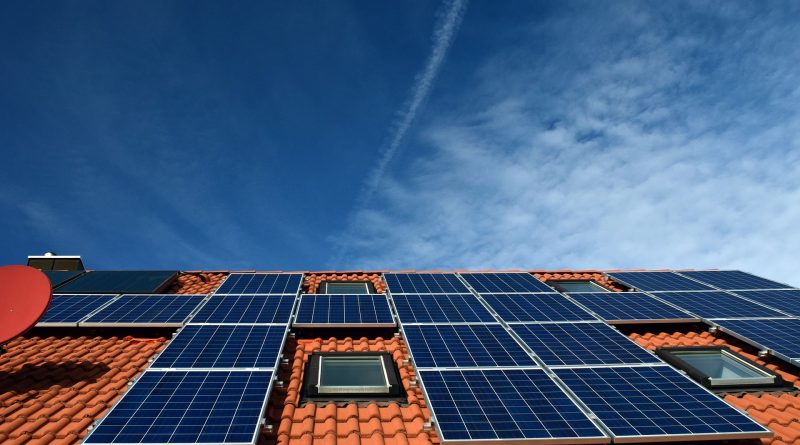Challenges: Why Solar Energy Isn’t Commonly Used in India
Solar energy is a clean and abundant source of power that has the potential to revolutionize the energy sector. With its numerous benefits, it is surprising that solar energy isn’t utilized more commonly in India. As one of the most populous countries in the world, India faces significant challenges when it comes to energy generation and consumption. This blog aims to explore the reasons behind the limited adoption of solar energy in India, despite its enormous potential.
Table of Contents
High Initial Investment
One of the major barriers to the widespread use of solar energy in India is the high initial investment required. Solar panels, inverters, and other necessary equipment are expensive, making it financially unviable for many individuals and businesses. Additionally, setting up solar infrastructure on a larger scale, such as solar parks or solar farms, requires substantial investment, which can be a deterrent for potential investors.
Inadequate Support Infrastructure
Another reason for the limited adoption of solar energy in India is the inadequate support infrastructure. While solar energy is a viable option in many regions of the country, the lack of proper infrastructure hinders its widespread use. Limited transmission lines, storage facilities, and inadequate grid connectivity pose significant challenges. Without a robust infrastructure, solar projects may face limitations in transmitting surplus power or storing energy for usage during non-sunlight hours.
Subsidies and Incentives
Although the Indian government has introduced various subsidies and incentives to promote solar energy, their effectiveness in encouraging its adoption is debatable. While these initiatives aim to reduce the financial burden on individuals and businesses, certain bureaucratic procedures and delays can hinder their implementation. Additionally, the lack of awareness about these subsidies and incentives further mitigates their impact.
Intermittency of Solar Power
The intermittent nature of solar power is another factor that hampers its broader adoption in India. Solar energy is dependent on sunlight, which is variable throughout the day and across different seasons. The inconsistency in power generation can lead to challenges in meeting the energy demand consistently. This issue can be partly mitigated through the use of energy storage systems, such as batteries, but the additional cost involved in implementing these systems can be a deterrent.
Reliance on Fossil Fuels
India’s heavy reliance on fossil fuels poses a significant challenge to the widespread adoption of solar energy. The country has a substantial number of coal-based power plants, which provide a cheap and readily available source of energy. The existing infrastructure and investment in conventional energy sources make it difficult to shift towards renewable energy, including solar power. Transitioning from fossil fuels to solar energy requires political will, significant planning, and investment in both infrastructure and skilled workforce.
Lack of Skilled Workforce
The lack of skilled workforce in the solar industry is another roadblock to its widespread adoption in India. The installation, operation, and maintenance of solar power systems require trained professionals who can handle the various aspects of solar projects. However, there is a shortage of skilled manpower, resulting in a limited number of experts who can efficiently implement and manage solar energy projects. Bridging this skill gap through training programs and education initiatives is crucial to expanding the use of solar energy.
Conclusion
Unlocking the full potential of solar energy is crucial for meeting India’s growing energy demands sustainably. Despite its promise, various barriers hinder widespread adoption. High initial investment costs, inadequate support infrastructure, intermittent power generation, reliance on fossil fuels, and a shortage of skilled workforce are key challenges limiting the use of solar energy in India.
SolarClue® stands as your ally in overcoming these obstacles. By providing comprehensive solutions, we aim to address the barriers and promote the seamless integration of solar energy. Together, let’s pave the way for a brighter, cleaner future by implementing effective policies and initiatives that harness the power of clean and renewable solar energy. Investing in solar power through SolarClue® can not only help India tackle its energy crisis but also contribute significantly to mitigating the effects of climate change. It is essential for the government, businesses, and individuals to collaborate with SolarClue® and prioritize the development and use of solar energy. Together, we can build a greener and more sustainable future for India—one powered by the sun and supported by SolarClue®.
Frequently Asked Questions
Challenges such as high upfront costs, lack of awareness, and inconsistent policies have hindered widespread adoption.
The initial investment required for solar installations can be a barrier for individuals and businesses, impacting the adoption rate.
Yes, a lack of awareness about the benefits and feasibility of solar energy is a significant challenge, particularly among residential and small-scale users.
Frequent policy changes and uncertainties in government incentives can deter investors and create instability in the solar market.
Yes, integrating solar power into the existing grid poses challenges such as grid stability, variability of solar generation, and the need for grid upgrades.
Limited availability of suitable land for large-scale solar projects is a challenge, especially in densely populated areas.
Access to affordable financing for solar projects can be challenging, hindering the ability of individuals and businesses to invest in solar installations.
Perceptions of solar technology as complex or unreliable can affect public confidence and slow down the adoption rate.
In some cases, concerns about the quality of solar panels and installations can be a barrier, impacting trust among potential users.
Lack of standardization can lead to varying product quality, making it challenging for consumers to make informed decisions and hindering widespread adoption.
Solar Tariff Rates 2024




